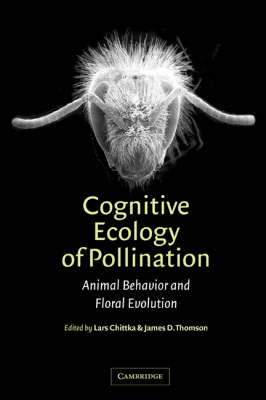
Cognitive Ecology of Pollination
Cambridge University Press (Verlag)
978-0-521-78195-4 (ISBN)
Important breakthroughs have recently been made in our understanding of the cognitive and sensory abilities of pollinators: how pollinators perceive, memorise and react to floral signals and rewards; how they work flowers, move among inflorescences and transport pollen. These new findings have obvious implications for the evolution of floral display and diversity, but most existing publications are scattered across a wide range of journals in very different research traditions. This book brings together for the first time outstanding scholars from many different fields of pollination biology, integrating the work of neuroethologists and evolutionary ecologists to present a multi-disciplinary approach. Aimed at graduates and researchers of behavioural and pollination ecology, plant evolutionary biology and neuroethology, it will also be a useful source of information for anyone interested in a modern view of cognitive and sensory ecology, pollination and floral evolution.
Preface; 1. The effect of variation among floral traits on the flower constancy of pollinators Robert J. Gegear and Terence M. Laverty; 2. Behavioural and neural mechanisms of learning and memory as determinants of flower constancy Randolf Menzel; 3. Subjective evaluation and choice-behaviour by nectar and pollen collecting bees Keith D. Waddington; 4. Honeybee vision and floral displays: from detection to close-up recognition Martin Giurfa and Miriam Lehrer; 5. Floral scent, olfaction and scent-driven foraging behaviour Robert A. Raguso; 6. Adaptation, constraint and chance in the evolution of flower color and pollinator color vision Lars Chittka, Johannes Spaethe, Annette Schmidt and Anja Hickelsberger; 7. Foraging and spatial learning in hummingbirds Sue Healy and T. Andrew Hurly; 8. Bats as pollinators: foraging energetics and floral adaptations York Winter and Otto v. Helversen; 9. Vision and learning in some neglected pollinators: beetles, flies, moths and butterflies Martha Weiss; 10. Pollinator preference, frequency-dependence and floral evolution Ann Smithson; 13. Pollinator-mediated assortative mating: causes and consequences Krinstina N. Jones; 14. Behavioural responses of pollinators to variation in floral display size and their influences on the evolution of floral traits Kazuharu Ohashi and Tetsukazu Yahara; 15. The effects of floral design and display on pollinator economics and pollen dispersal Lawrence D. Harder, Neal M. Williams, Crispin Y. Jordan and William A. Nelson; 16. Pollinator behaviour and plant speciation: looking beyond the 'ethological isolation' paradigm Nickolas M. Waser.
| Erscheint lt. Verlag | 28.5.2001 |
|---|---|
| Zusatzinfo | 7 Tables, unspecified; 55 Line drawings, unspecified |
| Verlagsort | Cambridge |
| Sprache | englisch |
| Maße | 159 x 236 mm |
| Gewicht | 727 g |
| Themenwelt | Naturwissenschaften ► Biologie ► Botanik |
| Naturwissenschaften ► Biologie ► Evolution | |
| Naturwissenschaften ► Biologie ► Zoologie | |
| ISBN-10 | 0-521-78195-7 / 0521781957 |
| ISBN-13 | 978-0-521-78195-4 / 9780521781954 |
| Zustand | Neuware |
| Haben Sie eine Frage zum Produkt? |
aus dem Bereich


